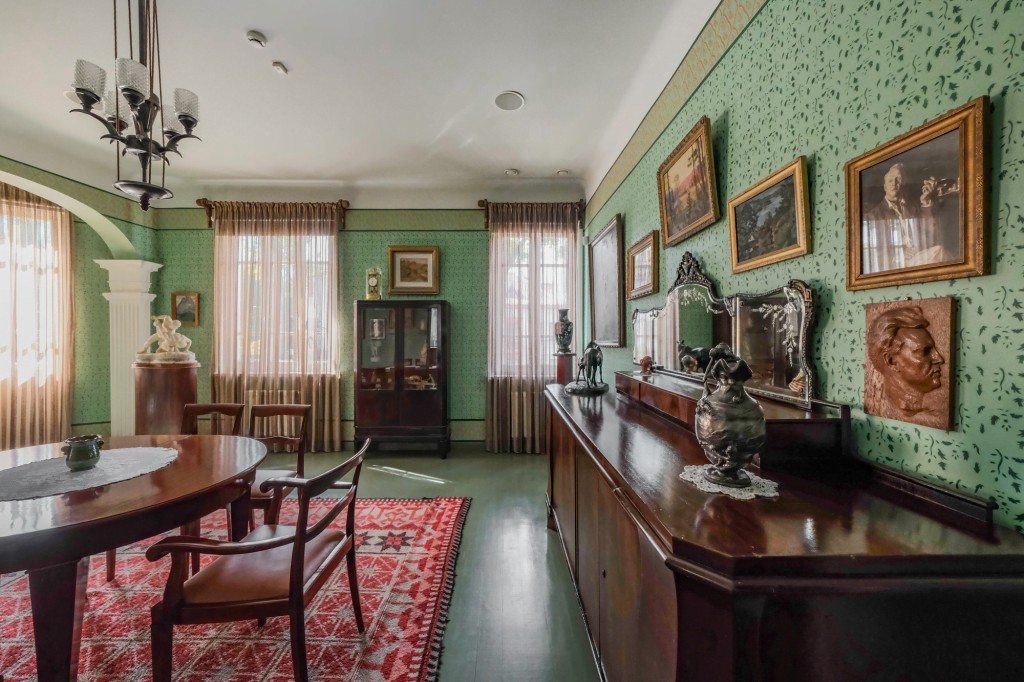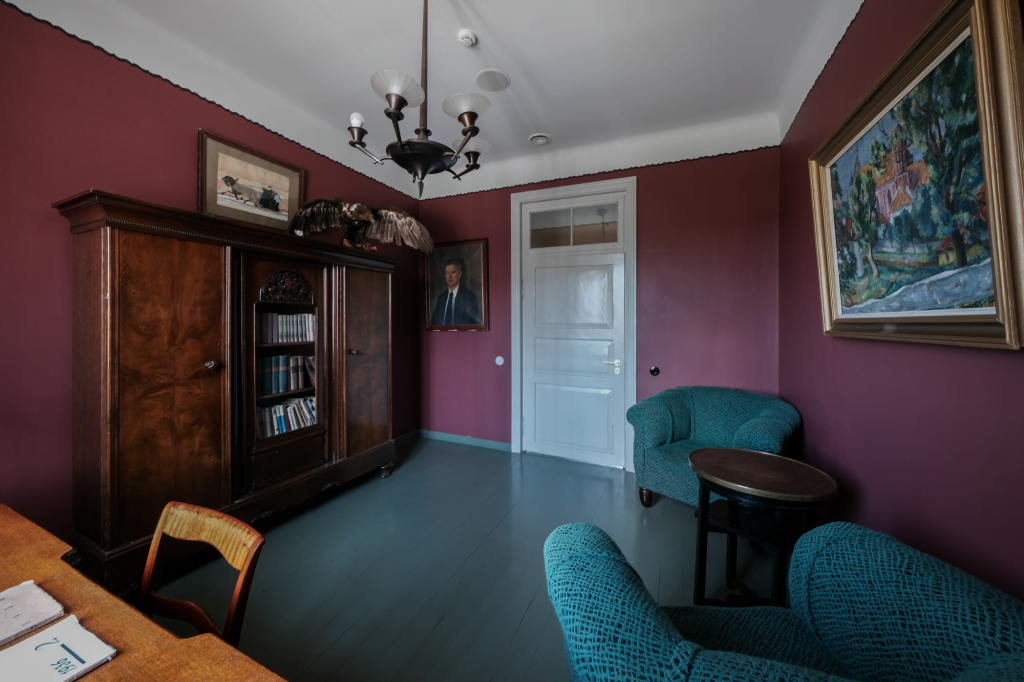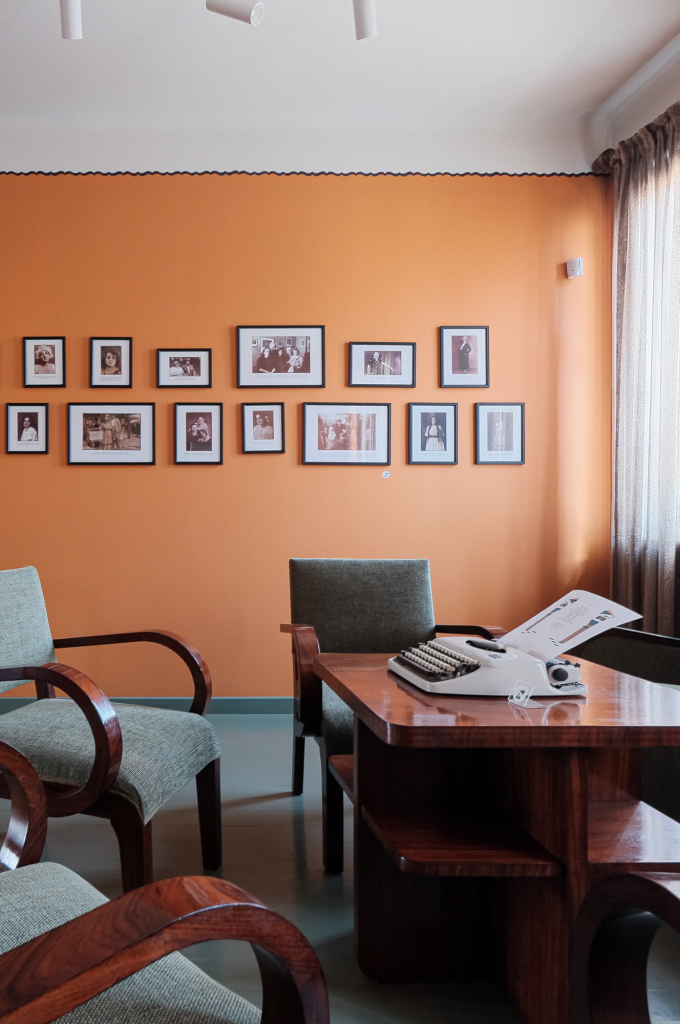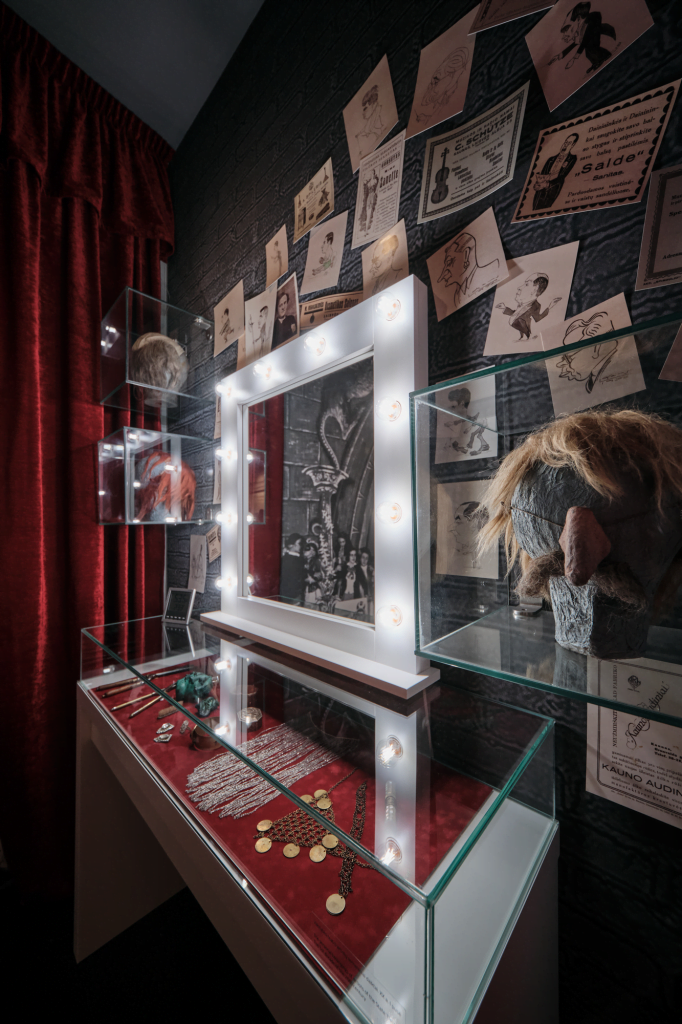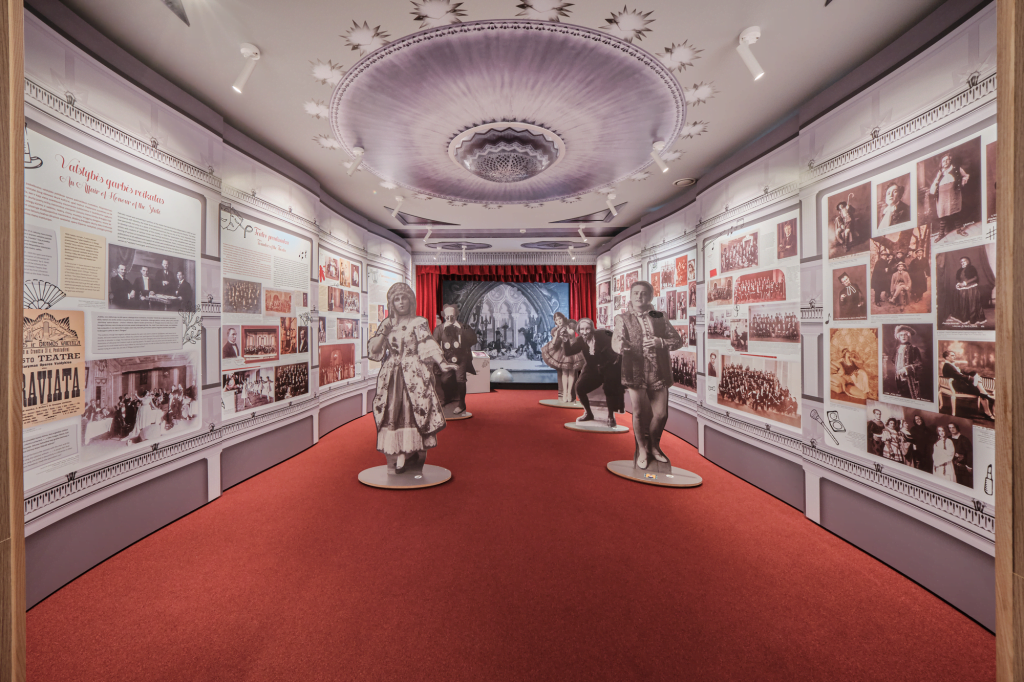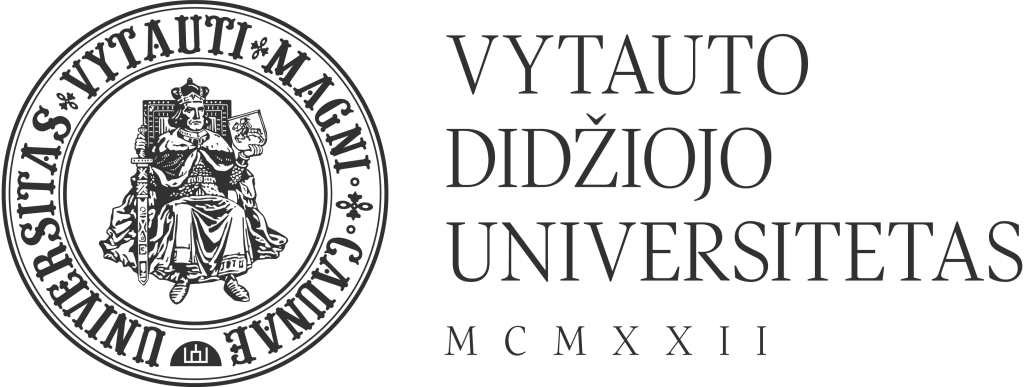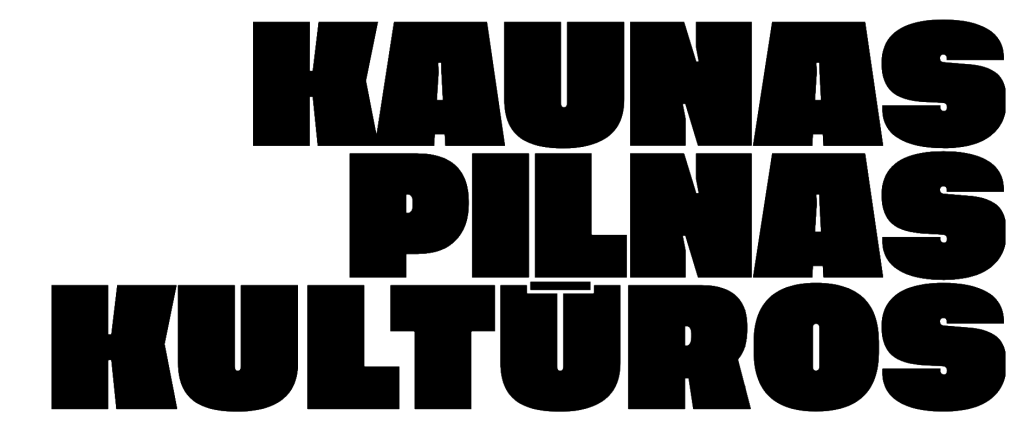KMM / Plan your visit to Mikas and Kipras Petrauskas House / Mikas and Kipras Petrauskas House / Permanent Exhibitions at the Mikas and Kipras Petrauskas House
Permanent Exhibitions at the Mikas and Kipras Petrauskas House
The museum currently houses two permanent exhibitions: the memorial apartment of Elena and Kipras Petrauskas and the exhibition entitled State Theatre. Music that Brings the Nation Together.
Kipras Petrauskas Memorial Apartment
ipras Petrauskas Memorial Apartment is a permanent exhibition at the Mikas and Kipras Petrauskas House, updated in 2018. The layout of this space has remained unchanged since the house was built, except for the removed bathroom. The apartment consists of seven rooms (three memorial rooms and 4 exhibition spaces), connected by a long hallway, and a kitchen with an authentic stove decorated with brass fittings. Each room tells its own unique story.

Unique interior
The memorial rooms (K. Petrauskas’s study, living room and E. Petrauskienė’s room) are furnished with authentic interwar furniture, and the walls are decorated with paintings by renowned Lithuanian artists. The rooms are decorated with impressive Art Deco lamps, sculptures and souvenirs gifted to the Petrauskas family on various occasions. The Petrauskas family’s conviviality and the gatherings of the Lithuanian elite that took place here are evidenced by the living room furnished with the Grotrian Steinweg grand piano, an oval table, and chairs. The study is adorned with a bookcase, an oriental-style card table, and Gloria sculpture, which was presented to the soloist on the occasion of a car race around Lithuania (1930).
History of the house
One of the exhibition rooms presents the history of the building’s construction, its inhabitants and the circumstances that led to the museum’s creation. The exhibition also features an impressive Petrauskas family tree, whose branches extend all the way to the present day. In this space, you will also be able to listen to opera arias and songs performed by the soloist Kipras Petrauskas.
Kipras Petrauskas
The permanent exhibition of the prominent soloist and educator Kipras Petrauskas introduces visitors to his creative work at the Mariinsky Theatre in St Petersburg, as well as in Lithuanian diaspora circles and in Kaunas, while creating the State Theatre. The exhibition features photographs and programme leaflets from various performances as well as fan letters. Visitors can admire Petrauskas’s huge touring suitcase, an impressive silver vase engraved with theatre artists’ autographs, and Liutauras’s stage costume from the opera Gražina, by J. Karnavičius. Behind a secret door, there are exhibits testifying to K. Petrauskas’s particularly masculine hobbies.
Elena Žalinkevičaitė-Petrauskienė
In the room of Elena Žalinkevičaitė-Petrauskienė (actress, poet, playwright and translator), visitors can get acquainted with this extraordinarily talented woman, her creative activities and work at the State Theatre, and her achievements as a theatre director. An interactive telephone offers a unique opportunity to listen to her poems, voiced by the opera soloist Marija Arutiunova.
Mikas Petrauskas
A separate room in the apartment is dedicated to Mikas Petrauskas (composer, educator, conductor, choir organiser, lecturer, publicist, active promoter of Lithuanian identity, singer, author of the first Lithuanian opera, Birutė). This permanent exhibition features a rich collection of photographs, manuscripts of musical works and printed publications, documents, fragments of letters and notebooks, programme leaflets from various events, and other archival sources.

Download the Petrauskas the RemARkable app to find out more about the stories hidden in this apartment, concerning: Kipras and Elena’s first meeting; Mikas Petrauskas’s flying in an aeroplane; Kipras Petrauskas’s soap; the rescue of Danutė, the daughter of the violinist and Lithuanian jazz pioneer Danielius Pomerancas; daily life in theatre and music school; and many other interesting stories!

Upon entering the State Theatre. Music that Brings the Nation Together exhibition, visitors are greeted by the stylised space of the City Garden with its inviting bench, the State Theatre’s facade, and the State School of Music’s windows radiating light. The scent of linden trees, characteristic of Laisvės Alėja, wafts in, created by Laimė Kiškūnė especially for the Mikas and Kipras Petrauskas House.
State Theatre. Music that Brings the Nation Together
On 15 February 2018, on the eve of the Centennial of the restoration of the Lithuanian State, a new exhibition, entitled State Theatre. Music that Brings the Nation Together, was launched. Itshowcases the history of the State Theatre, the State School of Music, and the Lithuanian culture as a whole: the evolution of a young state, the phenomenon of the temporary capital, the war, the occupation, the exile, and broken destinies.
Unique stories
The story of each musician of that time is unique: some spent their youth abroad, without the opportunity to work in their homeland; some were forced to choose emigration, unable to give their all to Lithuania; others paid the ultimate price for their sincere work with their lives or by exile. Foreign artists are also remembered, who, due to various political circumstances, were unable to work in their home countries and chose Kaunas and the State Theatre as their temporary or permanent home.
State Theatre
Next, in the space of the State Theatre, visitors will be greeted by Kipras Petrauskas, Adelė Galaunienė, Antanas Sodeika, Petras Oleka and Olga Malėjinaitė, all of whom have played a significant role in the history of Lithuanian theatre. In this space, you will learn about the history of the theatre building itself, Verdi’s historic La Traviata, the repertoire, the challenges of troupe formation, national operas and ballets, spectacular sets, ticket prices, and the theatre’s staff. You will also be able to see conductors’ batons and personal belongings, soloists’ jewellery, Petras Korsakas’s make-up tools, a prima ballerina’s pointe shoes, and caricatures by Leonas Kaganas and Romualdas Džiugas. On a stylised stage, with the help of an invisible prompter, costumes, wigs and hats, the visitors will have a unique opportunity to step into the shoes of a performer.

